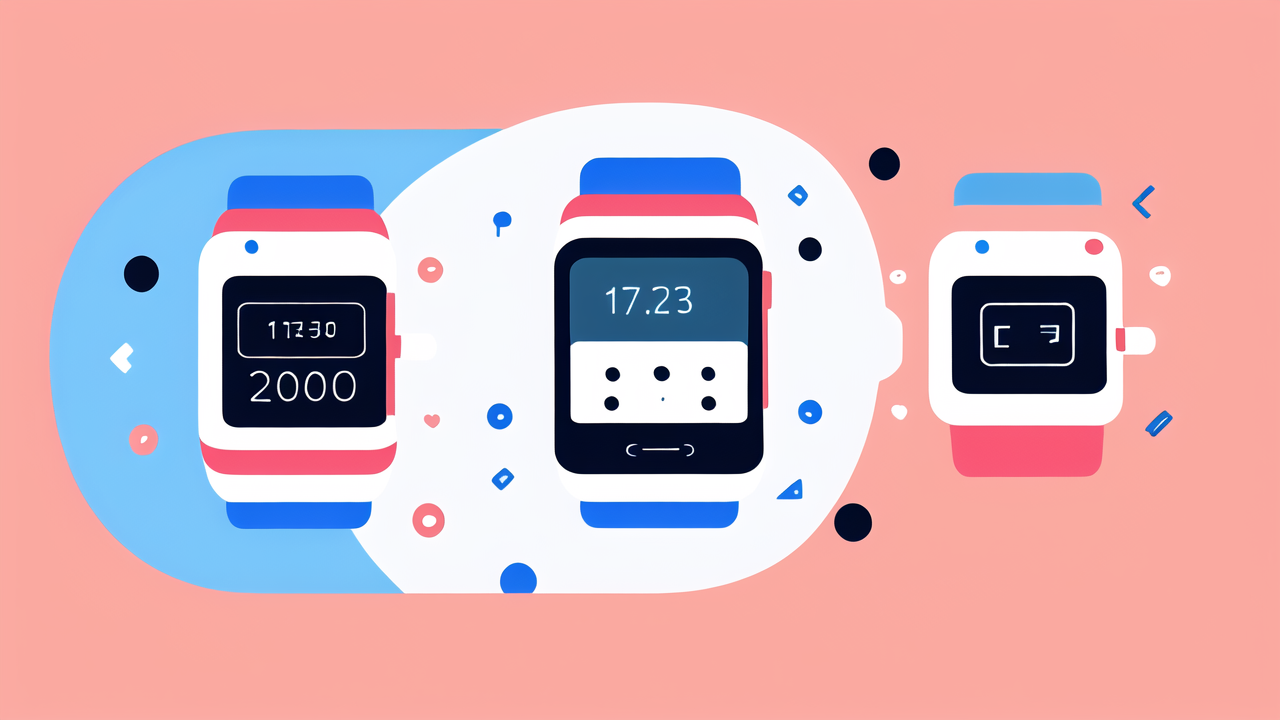Understanding Step Tracking: A Primer for Consumers
The Importance of Step Counting in Fitness Regimens
Step counting has become a key part of many fitness plans. It's an easy way to track daily activity. Many health experts recommend aiming for 10,000 steps a day. This goal can help improve overall health and fitness.

Counting steps motivates people to move more. It gives a clear target to work towards. Seeing progress can be very encouraging. It often leads to increased physical activity over time.
Regular walking has many health benefits. It can help with weight control and heart health. It's also good for mental well-being. Step tracking makes it easy to monitor this simple form of exercise.
Here are some key benefits of step counting:
- Increases awareness of daily activity
- Sets achievable fitness goals
- Encourages more movement throughout the day
- Helps track progress over time
- Can lead to improved overall health
How Step Tracking Technology Has Changed Over Time
Step tracking has come a long way since its early days. The first pedometers were simple mechanical devices. They used a pendulum to count steps. These were not very accurate and could only count steps.
Digital pedometers came next. They were more accurate and could store data. But they still had limits. They often needed to be worn on the hip for best results.
Smartphones brought step tracking to many people. Built-in sensors allowed phones to count steps. This made step tracking more common. But carrying a phone all day wasn't always easy.
Now, we have smart watches and fitness bands. These devices are small and light. They can be worn all day. They offer much more than just step counting. Modern trackers can monitor heart rate, sleep, and more.
The evolution of step tracking technology:
- Mechanical pedometers
- Digital pedometers
- Smartphone apps
- Fitness bands
- Advanced smartwatches
Advanced Features in Modern Smartwatches for Step Tracking
Integration with GPS and Location Tracking
Modern smartwatches combine step tracking with GPS technology. This adds more detail to fitness tracking. GPS can map your route and measure distance more accurately.

With GPS, watches can track outdoor activities like running or hiking. They can show your pace and elevation changes. This data helps create a fuller picture of your workout.
Some watches use GPS to auto-detect activities. They can tell when you start running or cycling. This makes tracking easier and more automatic. You don't need to manually start and stop tracking.
GPS also allows for safety features. Some watches can share your location with others. This can be useful for solo runners or hikers. It adds a layer of safety to outdoor activities.
Key benefits of GPS integration:
- More accurate distance tracking
- Detailed route mapping
- Automatic activity detection
- Enhanced safety features
- Better analysis of outdoor workouts
Analyzing Step Patterns and Efficiency
Smart watches now offer detailed analysis of your steps. They don't just count steps, but look at how you walk or run. This can include data on your stride length and cadence.
Some watches can detect changes in your gait. This might signal tiredness or potential injury. It can help prevent overtraining and reduce injury risk.
Efficiency metrics are also becoming common. Watches can measure how much energy you use per step. This can help you improve your running form and efficiency.
These features turn step data into useful insights. They can help you train smarter and reach your fitness goals faster. It's like having a personal coach on your wrist.
Advanced step analysis features:
- Stride length measurement
- Cadence tracking
- Gait analysis
- Energy efficiency metrics
- Personalized training insights
The Role of Machine Learning in Step Tracking Accuracy
Machine learning is making step tracking more accurate than ever. Smart algorithms can learn your movement patterns. This helps tell the difference between actual steps and other arm movements.
These systems can adapt to different activities. They can accurately count steps whether you're walking, running, or doing other exercises. This flexibility makes tracking more reliable across various activities.
Machine learning also helps filter out false steps. It can tell the difference between steps and similar motions. This might include activities like stirring a pot or brushing your teeth.
As you use the watch, it gets better at tracking your specific movements. This personalized approach leads to more accurate step counts over time. It's a big improvement over older, one-size-fits-all methods.
How machine learning improves step tracking:
- Learns individual movement patterns
- Adapts to different activities
- Filters out non-step movements
- Improves accuracy over time
- Provides personalized tracking
The Future of Step Tracking: Trends and Predictions
Wearable Technology and Its Impact on Step Tracking
Wearable tech is changing how we track steps and fitness. Smart clothing with built-in sensors may become more common. These could track steps and other metrics without a separate device.

We might see more focus on non-wrist wearables. Devices like smart rings or clips could offer discreet tracking options. This could appeal to those who don't like wearing watches.
Battery life will likely improve in future devices. Longer-lasting batteries mean you can track steps for days or weeks without charging. This could lead to more consistent, long-term data.
Integration with other smart devices might increase. Your step data could sync with smart home systems. This could automate things based on your activity level. For example, adjusting your thermostat when you return from a run.
Future trends in wearable step tracking:
- Smart clothing with built-in sensors
- Non-wrist wearable options
- Improved battery life
- Integration with smart home systems
- More seamless data collection
The Rise of AI in Enhancing Step Tracking Features
AI will play a bigger role in step tracking and fitness analysis. It could offer more personalized insights and recommendations. AI might suggest changes to your daily step goal based on your habits and health.
Advanced AI could detect patterns in your step data. It might predict health issues before they become serious. For instance, changes in your walk could signal early signs of joint problems.
AI assistants could provide real-time coaching. They might suggest when to speed up or take a break. This could make your walks or runs more effective and enjoyable.
Future AI might combine step data with other health metrics. This could give a more complete view of your health. It could help create truly personalized fitness and wellness plans.
AI enhancements in step tracking:
- Personalized goal setting
- Early health issue detection
- Real-time fitness coaching
- Holistic health analysis
- Custom wellness planning
Anticipating Changes in Consumer Behavior and Fitness Trends
As step tracking evolves, people's habits will likely change too. Many may expect more from their fitness devices. Basic step counting might not be enough anymore.
There could be a trend towards more complete health tracking. Step counts might be seen as part of a bigger health picture. This could include sleep quality, stress levels, and nutrition.
Social features may become more important. Sharing step counts and competing with friends could motivate more people. Virtual walking challenges might become more popular.
Privacy concerns could shape future devices. Users might want more control over their data. We could see more focus on secure, encrypted fitness tracking.
The focus might shift from quantity to quality of steps. Instead of just counting steps, devices might analyze the health benefits of your walking patterns. This could lead to more meaningful fitness insights.
Predicted changes in consumer behavior:
- Demand for more comprehensive health tracking
- Increased interest in social fitness features
- Greater concern for data privacy
- Focus on quality of movement over quantity
- Preference for personalized fitness insights




Leave a comment
This site is protected by hCaptcha and the hCaptcha Privacy Policy and Terms of Service apply.